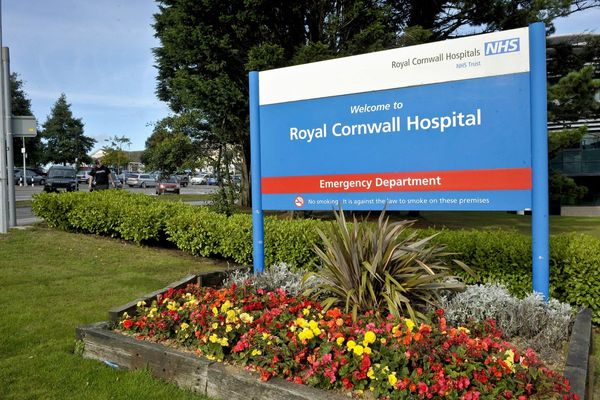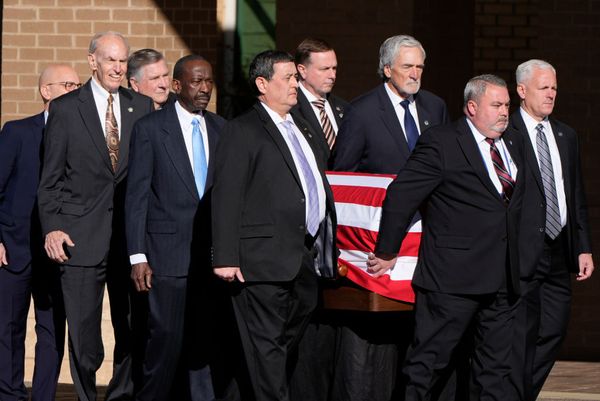
Bringing resurgent inflation down was never expected to be so relatively pain-free.
Federal Reserve Chair Jerome Powell warned of hard times ahead after the Fed began jacking up interest rates in the spring of 2022 to attack high inflation. Economists predicted that the much higher borrowing costs that resulted would cause a recession, with layoffs and rising unemployment, in 2023.
Yet the recession never arrived, and none appears to be on the horizon. The nation's labor market, though cooler than in the sizzling-hot years of 2022 and 2023, is still cranking out enough jobs to keep the unemployment rate near historic lows.
The trend toward slower, but still healthy, hiring likely continued in December. The Labor Department is expected to report Friday that employers added a still-solid 160,000 jobs last month, according to a survey of forecasters by the data firm FactSet. That would mean that the economy had added 2.7 million jobs in 2023 — an average of 226,000 a month.
Economists have predicted that the unemployment rate ticked up from 3.7% to 3.8%. But even that modest rise would mean that the jobless rate remained below 4% for the 23rd straight month — the longest such streak since the 1960s.
The resilience of the job market has been matched by the durability of the overall economy. Far from collapsing into a recession, the U.S. gross domestic product — the total output of goods and services — grew at a vigorous 4.9% annual pace from July through September. Strong consumer spending and business investment drove much of the expansion.
Despite the economy's steady growth, low unemployment, healthy hiring and cooling inflation, polls show many Americans are dissatisfied with the economy. That disconnect, which will likely be an issue in the 2024 elections, has puzzled economists and political analysts.
A key factor, though, is the public’s exasperation with higher prices. Though inflation has been falling more or less steadily for a year and a half, prices are still 17% higher than they were before the inflation surge began in the spring of 2021.
At the same time, though, average hourly pay has outpaced inflation over the past year, leaving Americans with more money to spend. Indeed, as they did for much of 2023, consumers, a huge engine for U.S. economic growth, hit the stores in November, shopped online, went out to restaurants or traveled.
Since March 2022, the Fed has raised its benchmark interest rate 11 times, lifting it to a 22-year high of about 5.4%. Those higher rates have made loans costlier for companies and households, but they are on their way toward achieving their goal: Conquering inflation.
Consumer prices were up 3.1% in November from a year earlier, down drastically from a four-decade high 9.1% in June 2022. The Fed is so satisfied with the progress so far that it hasn't raised rates since July and has signaled that it expects to make three rate cuts this year.
Beyond a hard hit to the housing market, higher rates haven’t taken much of an economic toll.
"A lot of the resilience was in parts of the economy that aren’t particularly sensitive to interest rates,’’ like healthcare and government, said Nick Bunker, economic research director for North America at the Indeed Hiring Lab.
The job market has cooled as inflation has subsided, though nowhere near enough to signal that a recession is on the way. Job growth in 2023 amounted to a monthly average of 232,000 through November, a solid figure but down from a record 606,000 a month in 2021 and 399,000 in 2022. And much of the hiring in recent months has been confined to only a few industries. Just three sectors of the economy — healthcare, governments and hotels and restaurants — accounted for 91% of the 199,000 added jobs in November.
Normally, slowing job growth might be a cause for concern. But under the current circumstances, with inflation still above the Fed’s 2% annual target, a more moderate pace of hiring is seen as just what the economy needs. Lower demand for workers tends to ease the pressure on employers to raise pay to keep or attract workers — and to then pass on their higher labor costs to their customers by raising prices.
And the labor market appears to be decelerating in a relatively painless way: Employers are posting fewer job openings but not laying off many workers. The number of Americans who apply each week for unemployment benefits — a proxy for job cuts — has remained unusually and consistently low.







